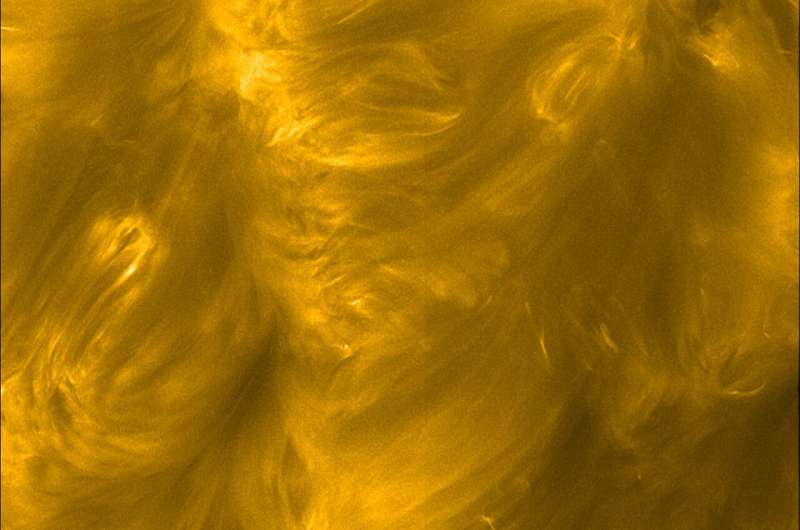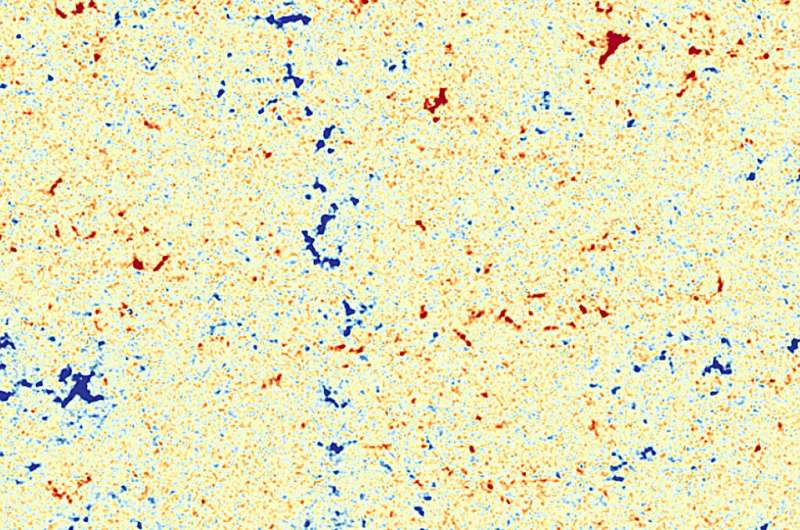This article has been reviewed according to Science X's editorial process and policies. Editors have highlighted the following attributes while ensuring the content's credibility:
fact-checked
trusted source
proofread
Small-scale magnetism leads to large-scale solar atmosphere

Thanks to close-up images of the sun obtained during Solar Orbiter's perihelion passage of October 2022, solar physicists have seen how fleeting magnetic fields at the solar surface build up into the solar atmosphere.
The outer solar atmosphere is known as the solar corona. It is termed "quiet" when there is little appreciable solar activity such as flares or coronal mass ejections. How the quiet corona reaches a temperature of 1 million °C when the surface is just at ~6000°C is a long-running mystery.
Although the action of magnetic fields has long been suspected, the nature of the magnetic processes responsible has never been fully understood. These new images of the quiet sun show how loops of million-degree gas—which form the building blocks of the solar corona—are associated with fleeting 100-km-sized magnetic field patches on the solar surface.
The images show the view from two of Solar Orbiter's instruments. The yellow image above was taken by the Extreme Ultraviolet Imager (EUI) and shows clearly the arch-like hot loops of plasma that reach up into the solar corona. The speckled image below comes from the Polarimetric and Helioseismic Imager (PHI), and reveals the magnetic polarity of the solar surface. The red and blue shaded regions represent patches of north and south magnetic polarities. A clear correlation can be seen between the small patches of magnetic fields and the coronal loops.

The coronal loops are apparently linked to scattered concentrations of the small-scale magnetic field concentrations on the surface, often with mixed-polarity configuration. This complex arrangement and the temporal evolution of these small magnetic field patches play a role in the building of the million-degree corona.
These observations capture surface magnetic structures and coronal features at almost the same high spatial resolution of ~200 km, allowing the data from the two instruments to be closely compared. With these unique data, solar physicists now have a window to investigate the role of the small-scale magnetic fields in the building of solar corona.
Like the perihelion pass that gave these results, Solar Orbiter is currently preparing for another close pass of the sun on 7 October 2023. On that day, the spacecraft will get as close as 43 million km to the sun—i.e., closer to the sun than the innermost planet Mercury. This allows Solar Orbiter to view the sun in precise detail, revealing the previously unseen small-scale processes that appear to drive so much of the sun's hot atmosphere. This allows Solar Orbiter to view the sun in precise detail, revealing the previously unseen small-scale processes that appear to drive so much of the sun's hot atmosphere.
Solar Orbiter is a space mission of international collaboration between ESA and NASA, operated by ESA. This new result is reported in the paper "Fleeting small-scale surface magnetic fields build the quiet-sun corona," by L. P. Chitta et al, published in Astrophysical Journal Letters on 5 October 2023.
More information: L. P. Chitta et al, Fleeting Small-scale Surface Magnetic Fields Build the Quiet-Sun Corona, The Astrophysical Journal Letters (2023). DOI: 10.3847/2041-8213/acf136
Provided by European Space Agency





















